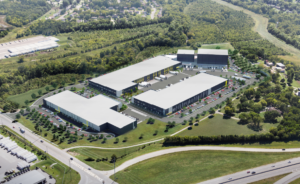Pennsylvania has many of the ingredients for an economy powered by innovation and entrepreneurship, according to a report released today by Brookings Institution, a prominent think tank in Washington, D.C.
- However, the state has struggled to bake them into a dynamic, high-growth economy, putting large swaths of Pennsylvania at risk of stagnation, said the report, which offers a series of policy recommendations for Pennsylvania’s next governor.
- “When you leave it to market forces alone, this type of really high growth, really important for economic well-being, innovative activity will happen in only a few places,” said Rob Maxim, a senior research associate at Brookings and co-author of the report.
- Rural areas and minority communities are especially at risk, according to the report, which noted a shortfall in job-creating businesses owned by women and minorities.
- “Those are challenges nationally but they seem to be accentuated by the way Pennsylvania is growing,” said Mark Muro, a senior fellow at Brooking and report co-author.
What’s the problem: At the heart of the report is a paradox.
- Pennsylvania is a state with “powerhouse research universities” engaged in cutting-edge work in the life sciences, artificial intelligence, robotics, transportation and energy, along with some “breakout companies,” according to the report.
- “In short, Pennsylvania has much of what it takes to be a winner on a national economic map characterized by a short list of ‘superstars’ and a longer one of ‘left-behind’ places, write Maxim, Muro and co-author Yang You, a senior research assistant at Brookings.
- High-quality economic growth, however, has not followed suit.
- The report makes its case through a number of metrics, including job creation.
- The report notes that Pennsylvania’s job growth post-pandemic compared to other states has been “relatively slow — a signal of deeper sluggishness almost certainly linked to lackluster innovation trends.”
What’s the cause: The report’s diagnosis boils down to two shortcomings: a lack of investment and a loss of focus.
- Pennsylvania was an early leader in innovation policy, symbolized by acts like creation of the Ben Franklin Technology Partners program in the early 1980s.
- The report also cites the Life Sciences Greenhouse initiative, formed in the early 2000s with money from a settlement with tobacco companies.
- Both programs direct resources toward entrepreneurs and startup companies around the state.
- But after the Great Recession, the state cut funding for innovation programs and never fully restored it, according to the report.
How deeply: Measured in 2022 dollars, the state was pouring around $140 million a year into its core innovation programs in the early 2000s, according to the report. The figure is now closer to $45 million.
- Gov. Tom Wolf sought to boost funding in his most-recent budget, and lawmakers went along with some of his requests, the report noted.
- “Still, even with these new investments, overall innovation funding in the state remains below where it was from FY 2015-2018, and well below its pre-2008 levels,” the report said.
- Other states have been stepping up, the report said, citing as an example a 20-year, $2.3 billion program in Ohio called Ohio Third Frontier.
What’s the solution: The report makes four broad recommendations aimed at the next gubernatorial administration in Pennsylvania. They include:
- Make innovation a centerpiece of state policy backed by a strong vision.
- “Today, Pennsylvania’s main innovation programs are mostly adrift, without either adequate funding or high-level advocates in government,” write the report’s authors.
- Accelerate efforts to turn university research into commercial ventures in the state’s major metro areas.
- Foster innovation and entrepreneurship outside of Philadelphia and Pittsburgh.
- “The two big hubs are getting some traction in the 21st-century growth economy, but much of the state is not participating in as deep a way,” Muro said.
- Develop a more inclusive economy by, for example, supporting entrepreneurship and business development among under-represented groups.
- “Without a specific effort to build a more inclusive innovation economy, Pennsylvania risks perpetuating the same inequalities that it has faced for years,” write the report’s authors.
Isn’t more money on the way: Yes. Pennsylvania is getting $268 million from a federal program called the State Small Business Credit Initiative, which will fund low-interest business loans and equity investments.
- However, the money is going directly to businesses rather than into creating what advocates call an entrepreneurial ecosystem.
- A healthy ecosystem can nurture new ideas and new companies.
- People may assume the work is getting done by local governments, colleges, chambers of commerce and economic development entities, said Skyler Yost, an ecosystem builder who does work for the York County Economic Alliance and the city of York.
- However, he said, “Their business models are not always the most ideal to respond to entrepreneurs’ needs. They often respond to the wider scope of local industries’ needs, which is entirely valid. But entrepreneur support organizations are sort of a key building block.”
Is anyone listening: While political campaigns tend to draw stark ideological lines, programs for entrepreneurship and innovation have generally drawn bipartisan support in Pennsylvania, the report notes.
- Yost said he was unsure whether innovation and entrepreneurship would be a priority for the next governor. The election is Nov. 8
- Nonetheless, the Brookings report carries an underlying message that can speak to leaders in both political parties, Yost said. “This is about creating the systems that allow us to have more people in every community in the state start businesses and live the American Dream in a way that allows them to employ their neighbors and pull every community in Pennsylvania up the global ladder.”
The second edition: The Brookings report released today — Commonwealth of innovation: A policy agenda for revitalizing Pennsylvania’s economic dynamism — follows a 2019 report by the think tank.
- The earlier edition did not include any policy recommendations but it was followed in late January 2020 by an innovation plan from Gov. Tom Wolf that packed some modest funding increases.
- Less than two months later, Covid-19 shut down the state and debates about economic policy took a turn toward survival.








